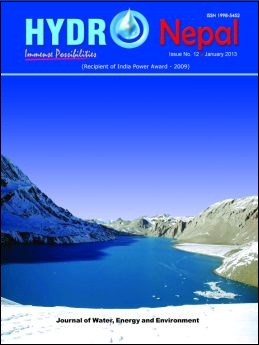National River Linking Project of India
DOI:
https://doi.org/10.3126/hn.v12i0.9026Keywords:
River Linking Project, Himalayan link, Peninsular link, Inter basin water transfer, Strategic Analysis, IndiaAbstract
India plans to transfer water from the water surplus region of the north-east to the water scarce regions of western and southern India. The plan is called the National River Linking Project (NRLP). Sixteen links in the Himalayan region and 14 links in the Peninsular region are proposed that will transfer annually about 174 Billion m3 (Bm3) of water through a canal network of 14,900 km. It will involve connecting 37 rivers and construction of dams/storages in 3,000 places. It is estimated to cost US$ 120 Billion (in 2000 price). The projected benefits are additional irrigation to 34 million hectares of land, generation of 34,000 MW of electricity, reduction of floods, and social upliftment.
Many prominent experts and personalities have criticized the project claiming that it will be a financial, social and environmental disaster. Both the proponents and opponents think that India will be doomed depending on whether the NRLP is implemented or not (Amarsinghe 2009). The International Water Management Institute (IWMI) in collaboration with the Challenge Program for Water & Food (CPWF) undertook a three year Strategic Analysis of the NRLP to evaluate the NRLP concept with a detailed analysis. This paper is a general description of the NRLP, and it summarizes the findings of the Strategic Analysis of this Project undertaken by IWMI-CPWF. Further, it explores the possible consequences to India's neighbors in general and Nepal in particular.
Hydro Nepal; Journal of Water, Energy and Environment
Vol. 12, 2013, January
Page: 13-19
DOI: http://dx.doi.org/10.3126/hn.v12i0.9026
Uploaded Date : 10/28/2013
Downloads
Downloads
Published
How to Cite
Issue
Section
License
The copyright of the articles and papers published is held by HYDRO Nepal Journal.
The views and interpretation in this journal are those of author(s), and HYDRO Nepal does not bear any responsibility for the views expressed by authors in the journal.




